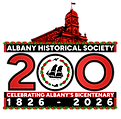Home | History Hub for Kids | Explorers
Explorers

Captain Willem Janszoon
In 1606, Captain Willem Janszoon, a Dutch explorer on the vessel, Duyfken (Little Dove), became the first European known to have seen and landed on the coast of Australia. After sailing about 197 nautical miles down the west coast of the Cape York Peninsula in northern Queensland and travelled south as far as Cape Keerweer (Cape Turn-Again) in the Gulf of Carpentaria.
After Janszoon, many Dutch explorers charted the northern, western and southern coastline of Australia during the 17th century and this newly found continent became known as 'New Holland.
In 1770, Captain James Cook and his crew landed at Botany Bay onboard the HMB Endeavour and stayed for 8 days and became the first recorded explorer to land Australia.


Captain Dirk Hartog
In 1616, Captain Dirk Hartog, a Dutch explorer on the vessel, Eendracht, became the first European known to have set foot on the west coast of Australia and only the second recorded on the continent.
After following the faster southern route to the port of Batavia in the East Indies (Indonesia), Dirk Hartog sailed too far east. On the 25th October 1616, Captain Dirk Hartog landed at Cape Inscription on the northern end, now named Dirk Hartog Island near Shark Bay in Western Australia.
To record their visit to the new land, Captain Dirk Hartog had a pewter dinner plate flattened and inscribed with details of their landing and further journey plans.


Pieter Nuyts &
Captain François Thijssen
In 1626-27, the south west coast was surveyed by Dutch explorer, Pieter Nuyts on the vessel 't Gulden Zeeparedt (The Golden Seahorse), commanded by Captain Francois Thijssen as part of a landmark expedition which mapped the southern coast of Australia.
The Golden Seahorse reached the south west tip of Australia, near Cape Leeuwin on 26th January 1627 and continued to sail eastwards mapping more than 1,500 kilometres of the southern coast from Albany, Western Australia to Ceduna, South Australia.
Captain François Thijssen, named the region ′t Landt van Pieter Nuyts (Pieter Nuyts' Land) after Nuyts, who was the highest ranking official on The Golden Seahorse.


Captain George Vancouver
In 1791, Captain George Vancouver, a British Royal Navy officer sailed from England on the vessel Sloop, Discovery and accompanied by the armed tender, Chatham. Captain Vancouver first sighted the west coast of Australia on 27th September 1791 and two days later he discovered one of the world's finest harbours and sailed into what we now know as - King George Sound. He was the first to map King George Sound which he named King George the Third's Sound and Princess Royal Harbour and navigated to Possession Point, where the British flag was raised to claim the area for the Crown.
Captain Vancouver also named Bald Head, Breaksea Island, Michaelmas Island, Seal Island, Princess Royal Harbour after Princess Charlotte Augusta Matilda, first daughter and fourth child of King George III and Oyster Harbour.


Captain Matthew Flinders
In 1802, Captain Matthew Flinders, a British explorer and cartographer, at the request of the naturalist Sir Joseph Banks, decided to launch an expedition to map the Australian coastline, as well as study the plant and animal life. The HMS Investigator anchored in King George Sound from 8th December 1801 to 5th January 1802. Robert Brown, Botanist and Peter Good, gardener assistant, collected over 500 samples of plant species. The botanical artist Ferdinand Bauer and the landscape artist William Westall completed many sketches of the plants and animals of the area.
Captain Flinders was the first person to use the name ‘Australia,’ including Van Dieman’s Land (now Tasmania) and most famous for his circumnavigation of Australia and where he and George Bass confirmed that Van Diemen's Land was an island.


Rear Admiral Philip Parker King
In January 1818, Rear Admiral Philip Parker King, a navigator and marine surveyor, onboard the cutter Mermaid, anchored off Oyster Harbou and came ashore.
Rear Admiral King returned on another voyage on 23rd December 1821, with the schooner Bathurst and dropped anchor on the western side of King George Sound and one mile from the entrance of Princess Royal Harbour. He and his crew stayed for two weeks and enjoy friendly relations with the Menang people.
As Australia’s first native born explorer, Rear Admiral King holds a unique place in our national history. He also visited King George Sound three times and his journal entries provide an detailed understanding of the local Menang people.

Dumont D’Urville
In October 1826, just prior to the arrival of the brig Amity, a French vessel, named the Astrolabe, anchored in King George Sound and stayed for 18 days. Its commander, Jules Sébastien César Dumont d'Urville, a French explorer and hydrographer, botanist, geologist, astronomer and entomologist who could also speak several languages, undertook significant biological studies. The renowned French painter, Louis Auguste de Sainson, painted various specimens including portraits of the Menang people.
Mokare, an Aboriginal elder of the Menang people, was first recorded in history when Captain Dumont D’Urville and two of his officers, Quoy and Gaimard, record his name in a journal and spoke highly of Mokare, who would become the man who was pivotal in aiding European explorer's in the area.

